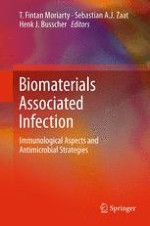2013 | OriginalPaper | Buchkapitel
4. Propionibacterium acnes: An Emerging Pathogen in Biomaterial-Associated Infection
verfasst von : Sheila Patrick, Andrew McDowell
Erschienen in: Biomaterials Associated Infection
Verlag: Springer New York
Aktivieren Sie unsere intelligente Suche, um passende Fachinhalte oder Patente zu finden.
Wählen Sie Textabschnitte aus um mit Künstlicher Intelligenz passenden Patente zu finden. powered by
Markieren Sie Textabschnitte, um KI-gestützt weitere passende Inhalte zu finden. powered by
